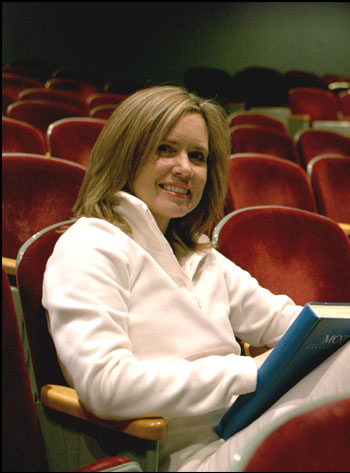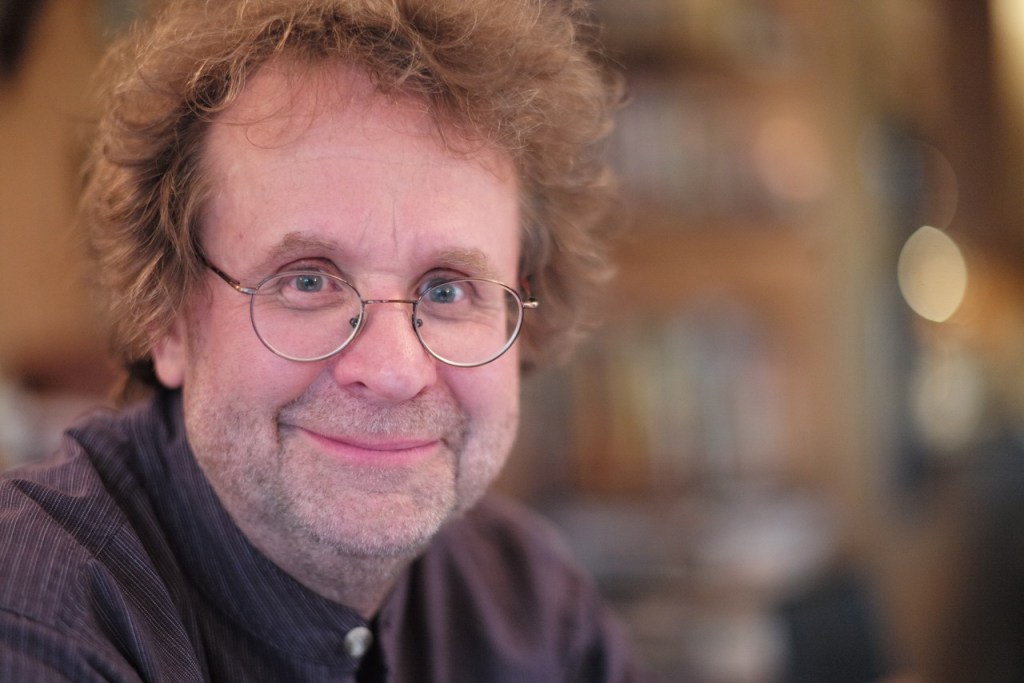Puccini’s La Bohème, opera’s ‘gateway drug,’ Friday through Sunday
By Peter Alexander Oct. 19 at 4:12 p.m.
“It’s the gateway drug for opera, because I think it’s the best first opera that anybody could ever see.”
Leigh Holman, the director of CU’s Eklund Opera, is talking about Puccini’s La Bohème, the current CU production that opens Friday at Macky Auditorium (7:30 p.m. Oct. 21). “It’s not only the story and the singing and the music, but the pacing of the piece is brilliant,” she says.
Other performances of the production will take place in Macky Saturday and Sunday (7:30 p.m. Oct. 22 and 2 p.m. Oct. 23; ticket information below). Holman is the stage director of the production, and Nicholas Carthy conducts. Guest artist Wei Wu, a 2013 graduate of CU who is building a professional career in the US, will appear in the bass role of Colline. Other parts and the orchestra will be filled with current CU music students.
If you don’t know the story, four young starving artists share a garret in Paris. They are poor, making money as they can, but at the start of the opera they are freezing and burning their work to keep warm. One of the four, the writer Rodolfo, meets Mimi, an equally impoverished seamstress, and they fall in love.
Rodolfo and Mimi join the other Bohemians for a Christmas eve dinner at the Café Momus. This scene, filled with families, children, street vendors, waiters and patrons of the café, is brilliant and spirited, introducing Musetta, the fiery girlfriend of Rodolfo’s roommate Marcello. The rest of the opera traces the passions and the breakups of the two couples, until Mimi returns to the garret deathly ill.
The characters’ emotional ups and downs always touch the hearts of audiences. “It’s a brilliant score,” Holman says. “The music’s great, in depicting what anybody’s feeling at any time. And the pacing’s brilliant— just when you think you can’t take any more heartache, somebody’s celebrating and you’re brought along in that.”
Another reason the characters touch people’s hearts is that they are relatable. Just like the Bohemians, most of us have passed through a stage of hopes and struggles at some point in our lives. And at CU the students in the cast are the same age as the characters.
Popular as it is, La Bohéme is not easy to produce. Carthy points out that unlike professional companies , CU can’t do whatever they want. “The difference between us and an opera company is that they look at what they want to do and go get the singers; we look at the singers and decide what we want to do,” he says.
The key to performing Bohéme is the role of Rodolfo, which vocally requires a slightly more mature singer than the others. “You have to build it around Rodolfo,” he says. “That’s going to be a slightly older voice.”
When you have someone who can fit that role, then you put the others in place. In this case, all the parts were cast with students except Colline, one of the four sharing the garret. His role calls for a strong bass, particularly in the aria he sings in Act IV, a farewell to his overcoat. For Colline, CU invited Chinese bass and CU grad Wei Wu back to campus. (Watch here for a separate feature on Wei Wu.)
The score is also a challenge for the conductor. Arturo Toscanini, who conducted the premiere of Bohéme in 1896, once said if you can conduct Bohéme, you can conduct anything. “It’s a massive piece of organization,” Carthy explains, “especially the second act when you’ve got all sort of different chorus voices.
“You’ve got the kids’ chorus singing different things, you’ve got the chorus split into mothers and vendors and waiters, and all the people selling different foods. But it’s the most glorious, glorious thing you can conduct!”
On top of that, the conductor and the orchestra have to be very, very flexible, he says. The tempo keeps shifting throughout, to make the musical phrases expressive. “I told the orchestra, this is music that is so flexible that if you look down, if you’re not concentrating, when you look again I won’t be where you think I am.”
This is a mater of “rubato,” to use the musical term, which means slowing down to stretch one phrase or emphasize one word of the text, then resuming the former tempo. “Taking time isn’t the problem,” Carthy says. “Once you’ve taken the time, it’s getting the momentum back. They find that more difficult. Any orchestra—any professional orchestra would find that.”
Opera companies around the world, and university opera programs as well, include La Bohéme in their programs again and again. That is a tribute to Puccini’s success in communicating the emotions of the opera’s young characters. And once the emotions reach listener’s hearts, they stay there. “Many opera buffs have been going to operas since they were young,” Holman says. “And they keep coming back to Bohéme.
“Once you get hooked on La Bohéme, we keep those fans forever!”
# # # # #
Giacomo Puccini: La Bohème
CU Eklund Opera, Leigh Holman, stage director
Nicholas Carthy, conductor
7:30 p.m. Friday, Oct.21, and Saturday, Oct. 22
2 p.m. Sunday, Oct. 23
Macky Auditorium





One thought on “Eklund Opera brings 19th-century Paris to Macky”